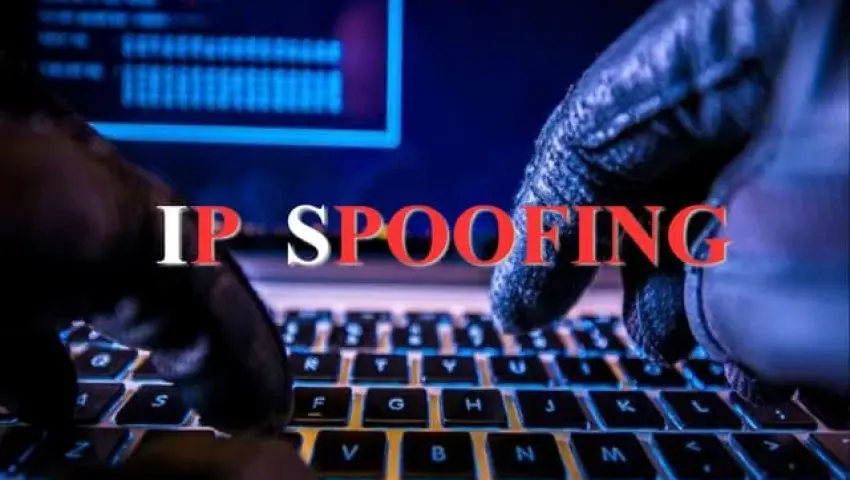
IP Spoofing & How Forensic Analysts Detect It
IP spoofing is a common tactic for hiding the source of an attack. Learn how it works and the sophisticated methods forensic analysts use to uncover the true origin.
In the digital world, an IP address is like a return address on an envelope. It tells the recipient where a packet of information came from. But what if a malicious actor could forge that return address? This is the essence of IP spoofing.
IP spoofing is a technique where an attacker creates Internet Protocol (IP) packets with a forged source IP address to hide the sender's identity, impersonate another system, or both. It's a fundamental tool for launching certain types of cyberattacks, most notably DDoS (Distributed Denial of Service) attacks and blind spoofing for session hijacking.
For forensic analysts, a spoofed IP is a deliberate obfuscation tactic. This article explains how spoofing works and, more importantly, the multi-layered forensic process used to detect it and trace the attack back to its true source.
Part 1: How IP Spoofing Works (The "How")
To understand how to detect spoofing, you must first understand how it's done.
The Normal Packet: In a legitimate transmission, a data packet has a header containing the source IP (the true sender) and the destination IP (the target).
The Forgery: An attacker uses low-level programming or tools (like hping3 or Scapy ) to manually craft a packet. In this crafted packet, they replace the genuine source IP address with a fake one.
The Goals of Spoofing:
DDoS Attacks: In a reflection/amplification DDoS attack, the attacker sends requests to a third-party server (like an open DNS resolver) with the victim's IP as the source. The server then sends a large response to the victim, overwhelming them. The attacker's real IP is never seen by the victim.
Bypassing IP-based Authentication: If a system grants access based on a whitelist of IP addresses, an attacker can spoof an allowed IP to gain entry.
Masking the Origin: The primary goal is to make the attack appear to come from somewhere else, complicating the investigation.
The Critical Limitation of Spoofing
Spoofing has a major weakness: it's largely one-way. In a typical TCP connection, the recipient sends acknowledgments (ACKs) back to the source IP. If the source IP is spoofed, these ACKs are sent to the innocent, spoofed host, not the attacker. Therefore, spoofing is ineffective for attacks that require a two-way conversation (like browsing a website). It's primarily used for one-off packets in DDoS or for the initial SYN packet in more complex session hijacking.
Part 2: How Forensic Analysts Detect IP Spoofing
Detecting spoofing is a process of finding inconsistencies. Analysts look for clues that the "return address" on the packet doesn't match the reality of the postal system.
1. Packet Analysis: The First Clue
If you are fortunate enough to have a full packet capture (PCAP) from the victim's network, you can analyze the packets directly.
TCP Sequence Number Analysis: In a normal TCP handshake (SYN, SYN-ACK, ACK), the sequence numbers follow a predictable pattern. A spoofed connection will never complete the handshake. You will see SYN packets from the spoofed IP but no subsequent ACK packets, as the innocent spoofed host will receive the SYN-ACK and discard it.
Window Size Analysis: Different operating systems (Windows, Linux, macOS) use different default TCP window sizes. If the window size in the spoofed packet is inconsistent with the OS of the host it's supposedly coming from, it's a red flag.
2. Log Correlation: The Power of Multiple Data Points
This is often the most practical method. The analyst compares logs from different points in the network path.
The "Impossible Path" Check: This is a classic giveaway. If your web server logs show an attack coming from an IP address assigned to a network in Germany, but your border router's NetFlow data shows that the packet actually entered your network from a link that only connects to ISP in Canada, you have a clear case of spoofing. The packet could not have taken that path.
Time-To-Live (TTL) Analysis:
The TTL is a value in the IP header that decreases by one each time the packet passes through a router. Its purpose is to prevent packets from looping forever.
Every operating system has a default initial TTL value (e.g., 64 for Linux, 128 for Windows).
If a packet arrives with a TTL of 58, it has passed through 6 hops (64-58=6) if the source was Linux.
If the alleged source IP is on the other side of the world (which would require 20+ hops), but the TTL indicates it only traveled 6 hops, the packet must have originated from somewhere much closer—evidence of spoofing.
3. Network Infrastructure Evidence
Ingress Filtering Check: Well-configured networks practice ingress filtering (BCP38), where border routers block packets entering the network that have a source IP not belonging to that network. If an ISP implements this, it prevents its customers from spoofing IPs. The absence of such filtering on the attacker's network is what makes spoofing possible. Forensic reports often note this as a contributing factor.
Backscatter Analysis: During a DDoS attack using spoofed IPs, the victim's responses (e.g., SYN-ACKs) are sent to the innocent, spoofed IPs. This flood of unwanted traffic is called "backscatter." By monitoring unused IP space, security researchers can detect backscatter to analyze the scale and targets of a DDoS attack, confirming the use of spoofing.
Part 3: The Ultimate Challenge: Tracing the Real Attacker
Detecting that an IP is spoofed is only half the battle. The real question is: Where did the packet actually come from?
This is significantly harder and often requires cooperation across ISP boundaries.
Traceback Techniques: This involves working upstream from the victim network, hop-by-hop, using NetFlow data from each router along the path. Each router can log the interface a packet arrived on and the interface it was sent out on.
Law Enforcement Involvement: With a legal order, investigators can contact the ISP where the traceback leads. That ISP can then identify the customer assigned the real IP address at the time of the attack.
Conclusion: A Solvable Puzzle
IP spoofing is a real threat that complicates attribution. However, it is far from a perfect cloak of invisibility.
For Defenders: Implementing ingress and egress filtering (BCP38) is the single most effective way to prevent your network from being used as a source of spoofed packets.
For Forensic Analysts: Spoofing detection relies on a foundation of comprehensive logging (NetFlow, server logs, PCAP) and correlating evidence from multiple sources. By looking for inconsistencies in the network path, TTL values, and TCP behavior, analysts can confidently identify spoofed traffic.
While spoofing can obscure the direct source, it often leaves a trail of forensic evidence that, with careful analysis, can point investigators in the right direction and even lead back to the true origin of the attack.
Mrityunjay Singh
Leave a comment
Your email address will not be published. Required fields are marked *

